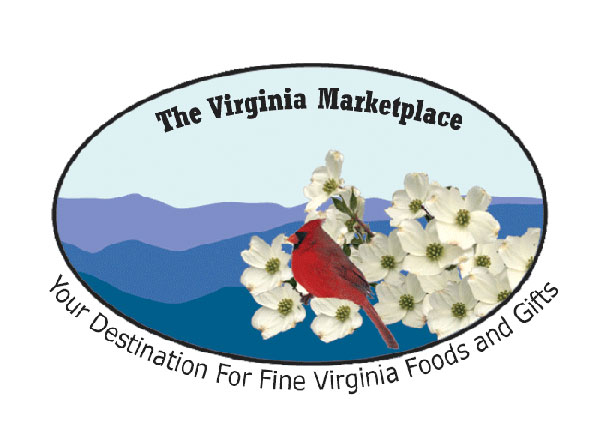 In 1985, Blue Crab Bay founder Pamela Barefoot had an inspired vision of wht a business could be. From her seaside farmhouse kitchen she imagined a company that would put the tastes of the Chesapeake region on the map, be a protector of the environment and provide stimulating and fun employment for citizens of her rural community. Surrounding herself with foods from the Chesapeake, a functioning stove, a list of contacts and boatloads of imagination and determination. Barefoot got to work. Sales exploded, awards rained plentiful, and the number of empoyees mounted. Barefoot began distribution of other products, including foods and gift items.
In 1985, Blue Crab Bay founder Pamela Barefoot had an inspired vision of wht a business could be. From her seaside farmhouse kitchen she imagined a company that would put the tastes of the Chesapeake region on the map, be a protector of the environment and provide stimulating and fun employment for citizens of her rural community. Surrounding herself with foods from the Chesapeake, a functioning stove, a list of contacts and boatloads of imagination and determination. Barefoot got to work. Sales exploded, awards rained plentiful, and the number of empoyees mounted. Barefoot began distribution of other products, including foods and gift items.Her first brand, Bue Crab Bay Co., featured original products like seasonings for crab dip and gift packs wrapped in weathered fishnet with seashells. In the late 1980s, on the strength of the addictive "Clam Dip Blend", the customer base escalated geographically and her small company began exhibiting a national trade show. Blue Crab Bay offers an extensive product line of specialty foods and gifts, internationally recognized for their signature blue labeling, handsmoe packaging and unrivaled taste. The handsome packaging even gained the attention of Hollywood set directors. Kitchen cabinets were stocked full in an opening shot of Julia Roberts' film "Sleeping with the Enemy."
When she found her company in financial trouble, Barefoot did not give up. She went into her kitchen and developed her dream product. She spent the early months of 1994 mixing tomato paste, clam juice, horseradish and seafood spices to create Sting Ray Bloody Mary Mixer. Their best selling Sting Ray Bloody Mary Mixer won top honors in Outstanding Beverage a prestigious award competition at the International Fancy Food Show in New York.

Sting Ray Bloody Mary Mixer is a thick and rich blend of clam and tomato juices spiced with Blue Crab Bay Co.'s Chesapeake Bay Style Seagfood Seasoning and freshly grated horseradish. Great alone, as a mixer, or a cooking sauce. Check out our Recipes using Sting Ray Bloody Mary Mixer as a cooking sauce. A true combination of the flavors of the Chesapeake region!
Sting Ray was featured on Food Network TV's Food Finds. As featured in the NEW YORK TIMES: In a blind taste test of 8 Bloody Mary Mixers, Sting Ray won top honors! "Sting Ray - with an excellent balance of pepper. horseradish and tomato, this delightfully tangy mixer, made with clam juice for a subtly briny hint was the best in the tasting." Florence Fabricant NEW YORK TIMES. Winner of Outstanding Beverage, 1998 International Fancy Food Show! Sting Ray Bloody Mary Mixer came in NUMBER ONE in the "Great Bloody Outlaw Radio Mary Mix" competition in the category of "Best Seafood Lovers Mary Mix and came in #2 in all around best tasting mary mix.
Over the year's, Blue Crab Bay has won many awards in addtion to the
Gold Trophy for Outstanding Beverage in June 1998 at the International Fancy Food Show
Siver trophy Winner at the International Fancy Food Show for:
Outstanding Appetizer CRAB DIP KIT July 1999
Outstanding PRODUCT LINE June 1998
Outstanding Food Gift Pack SOUPER GIFT PACK June 1998
Outstanding Beverage STING RAY MIXER June 1997
Outstanding Beverage STING RAY MIXER July 1995
Awarad of Excellence for a Regional Product, presented by Julia Child and the American Institute of Wine & Food, Washington, D.C. October 1991.
Hottest National Brand, Virginia Business Magazine 1999
Fantastic 50 Award, Virginia Chamber of Commerce, for recognition as one of Virginia's fastest-growing private companies March 1998
In the shadows of all this success, Blue Crab Bay Co.'s corporate culture continues to demonstrate a strong committment to the environment and its rural Eastern Shore community.
At The Virginia Marketplace we are currently offering Blue Crab Bay Bloody Mary Mixer in Seafood Gift Baskets and in a Bloody Mary Brunch Basket. We also sell all 5 of their seafood soups: New England Clam Chowder, Eastern Shore Clam Chowder, Crab Norfolk Chowder, She Crab Soup and Cream of Crab soup. They are available alone, in samplers, gift boxes, in a nautical gift box, and gift baskets. At The Virginia Marketplace you can also find Blue Crab Bay Clam, Shrimp, and Crab Dip Kits. They are also available in gift baskets, alone, as a sampler, and in gift boxes.
